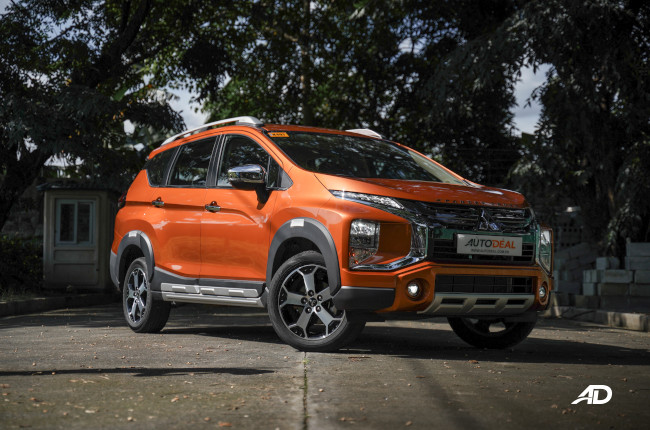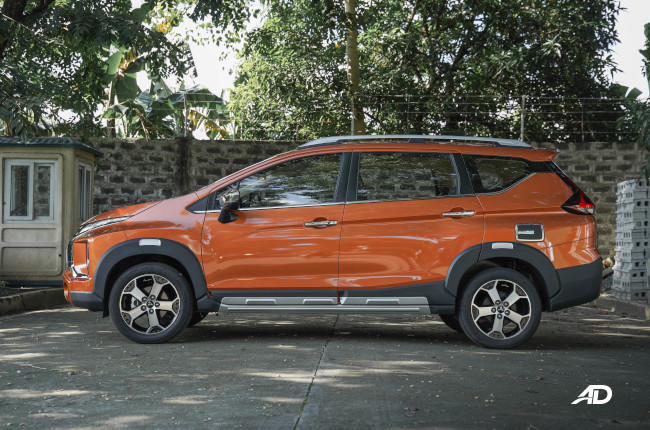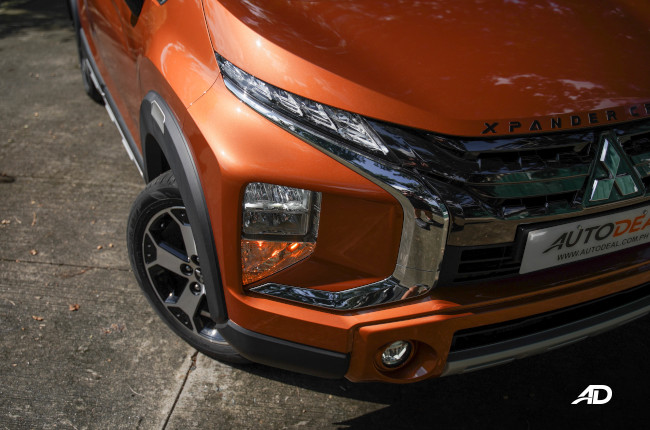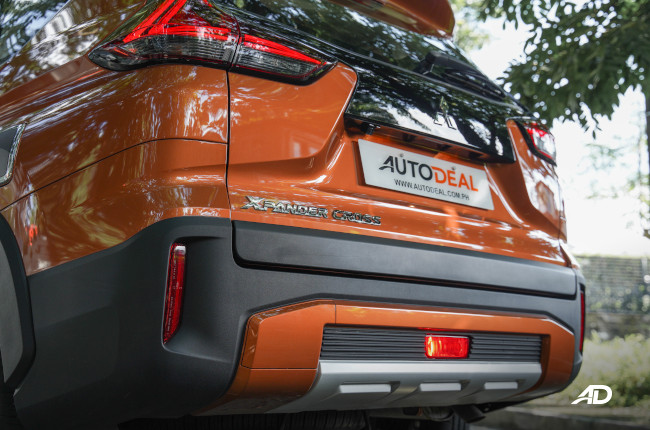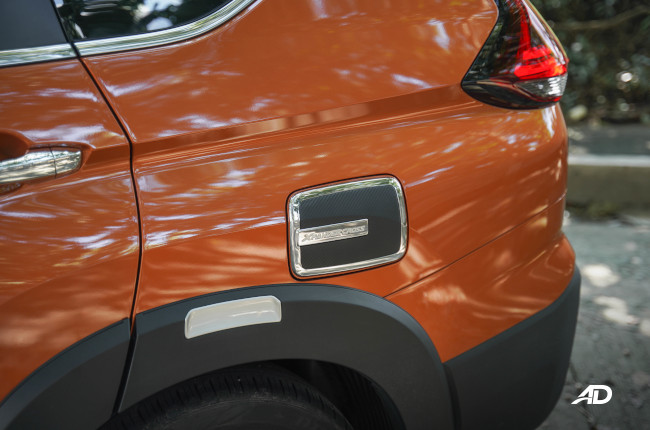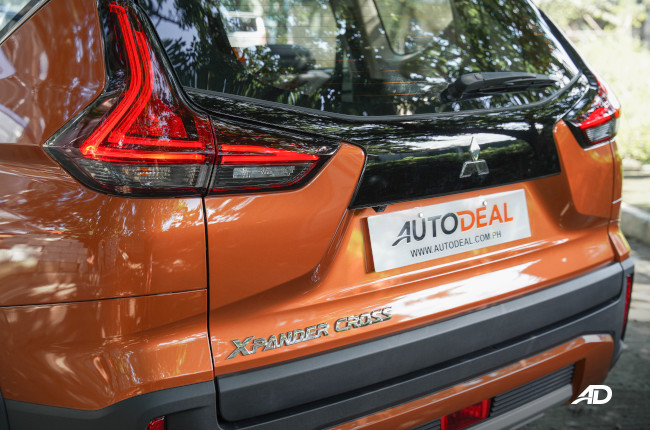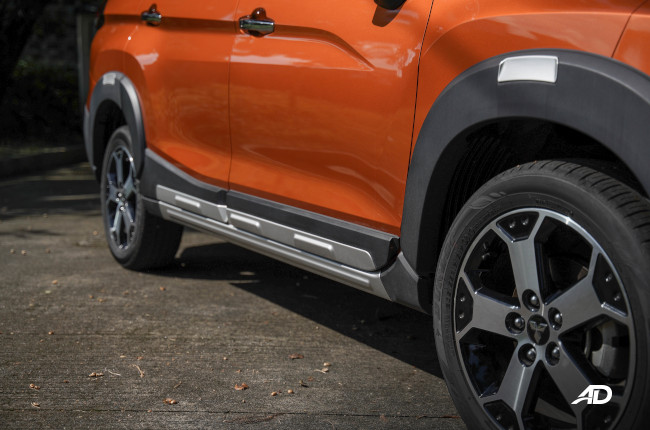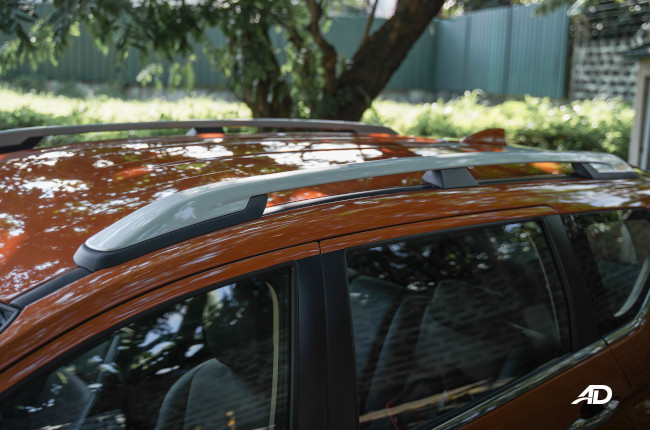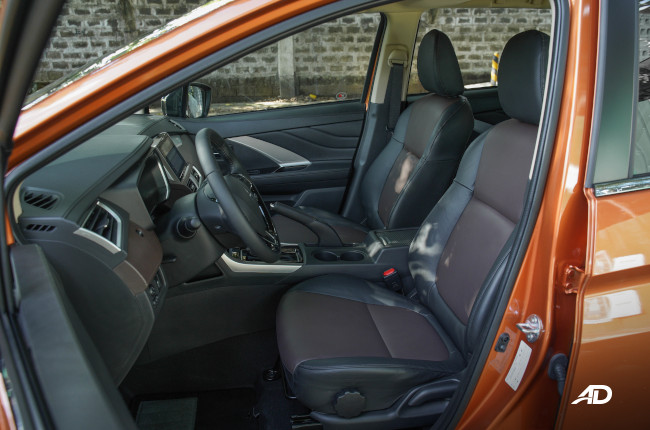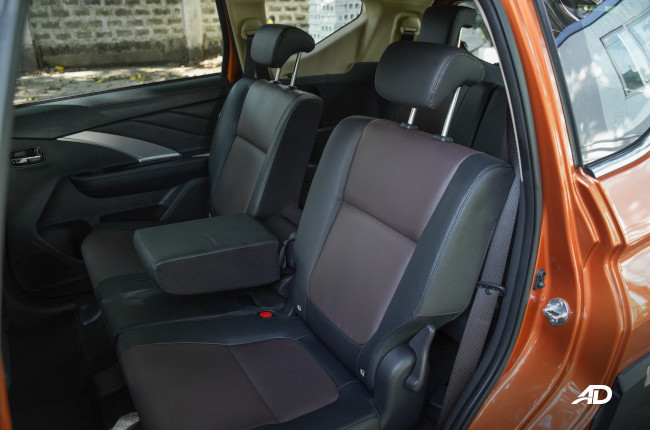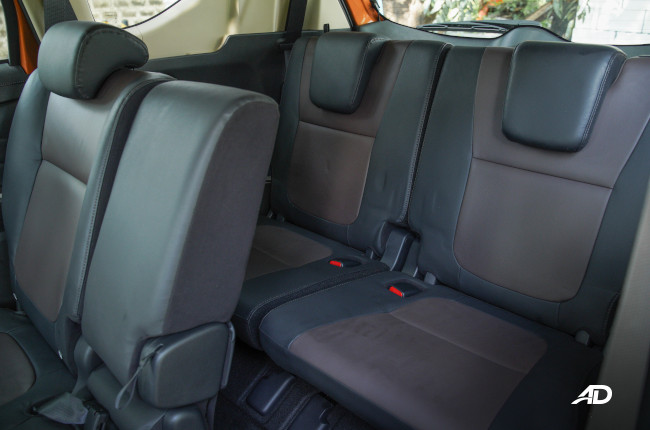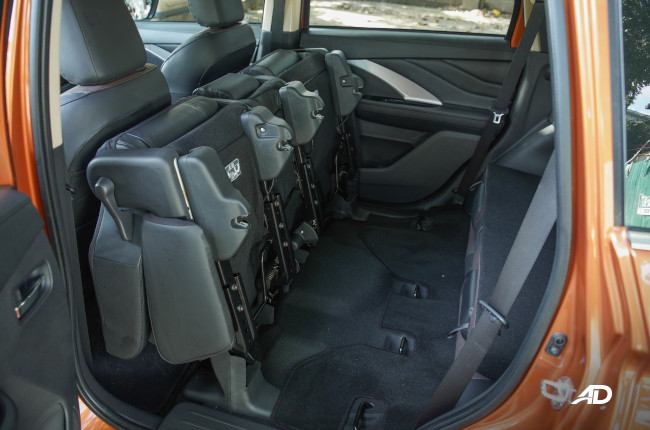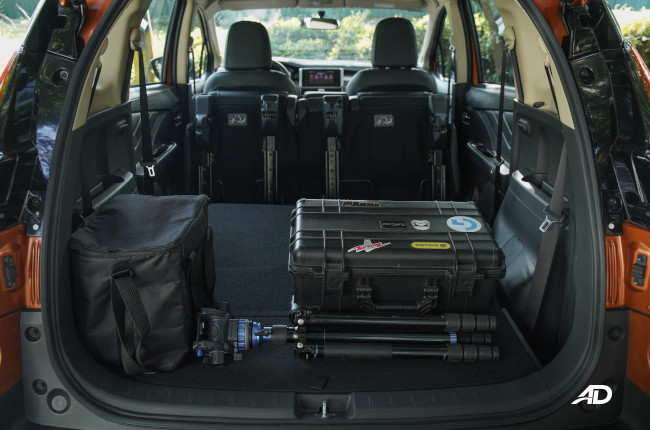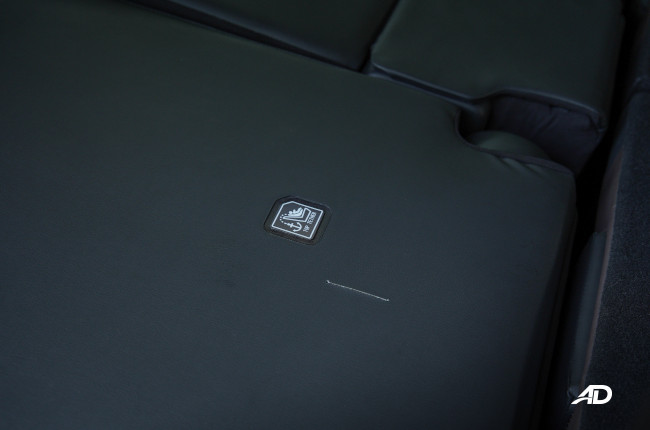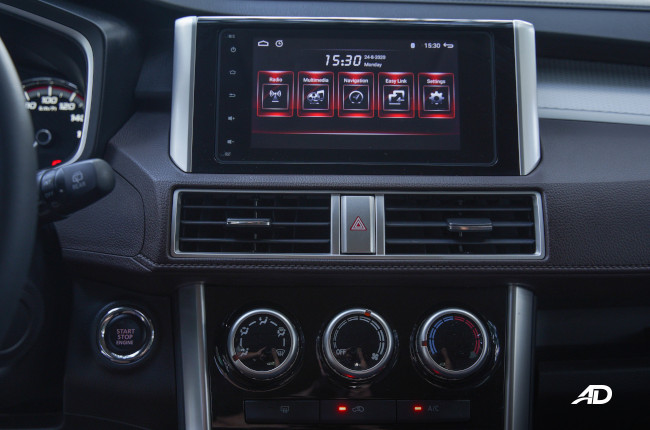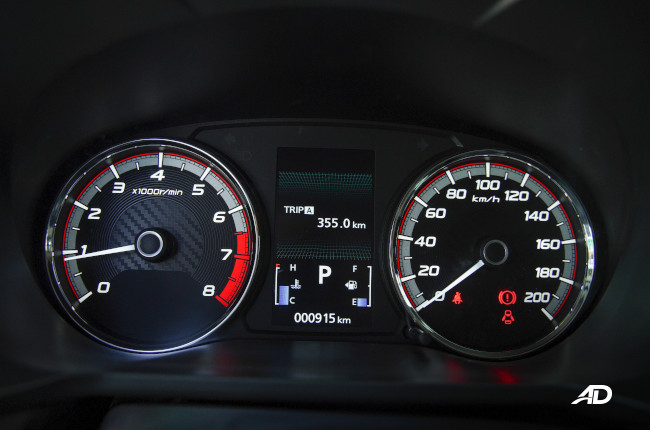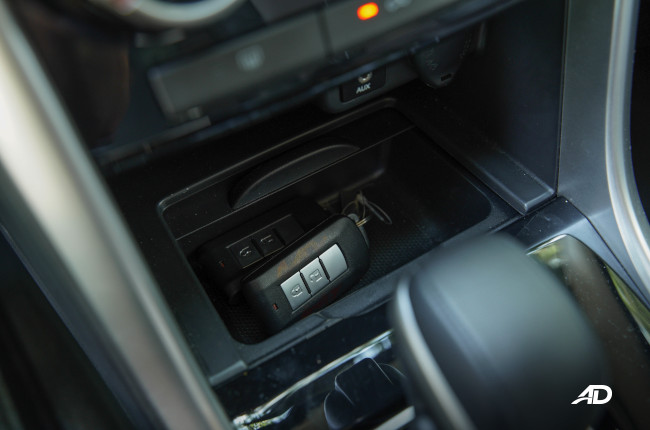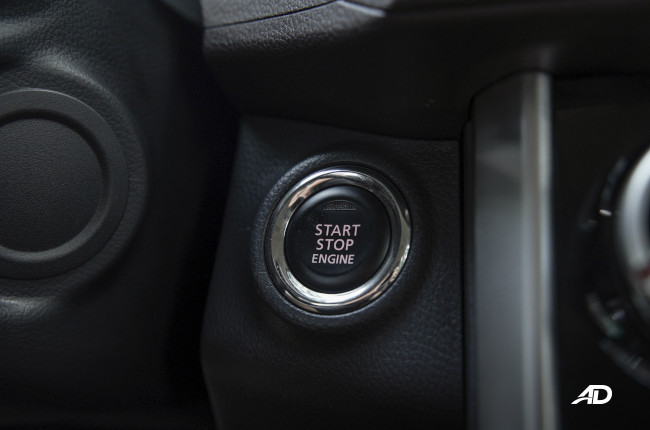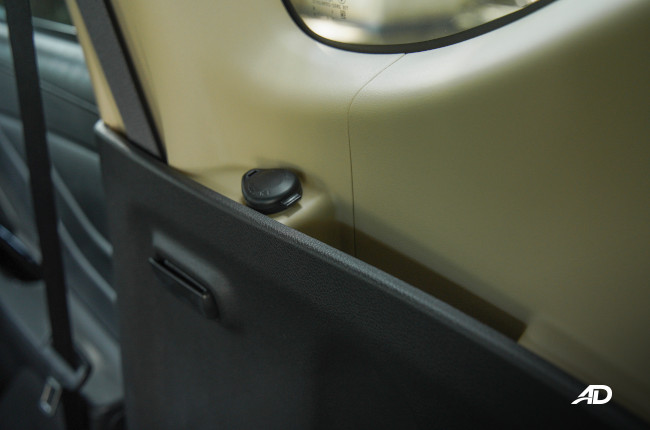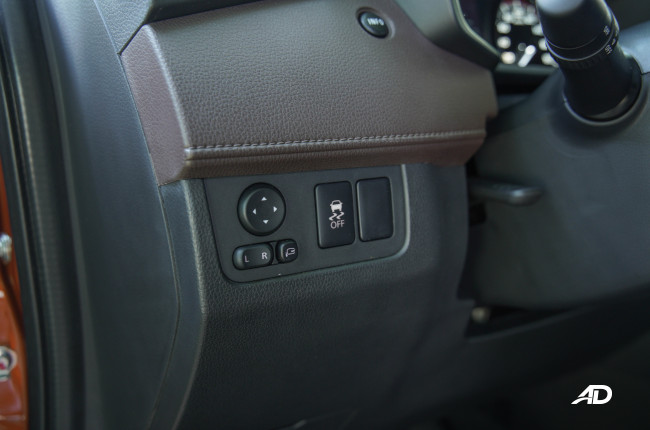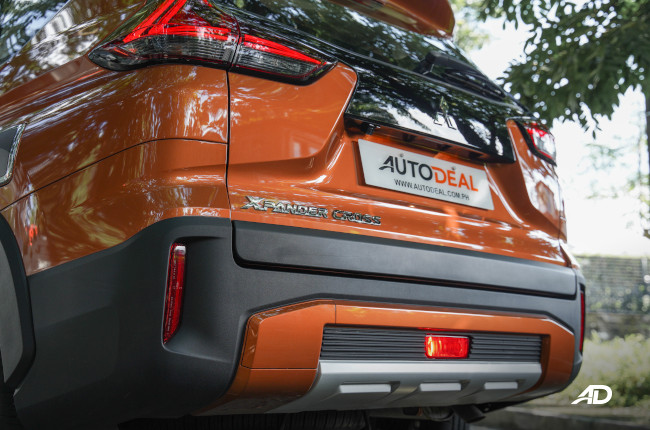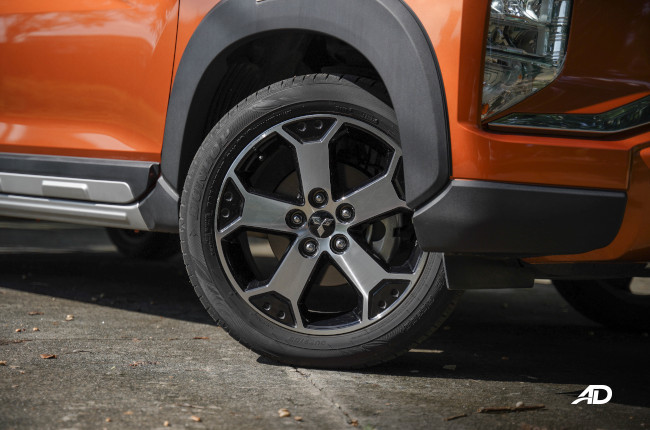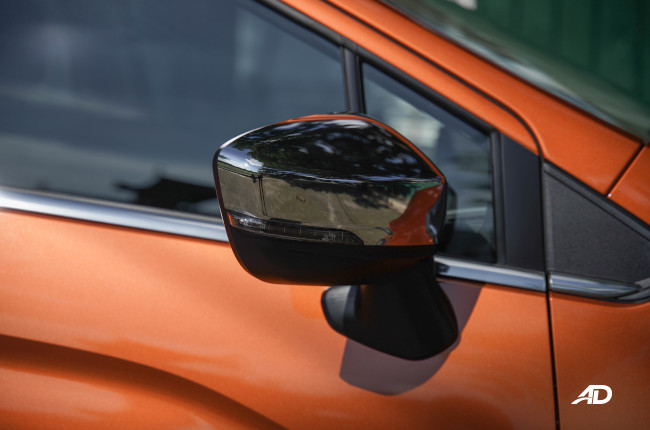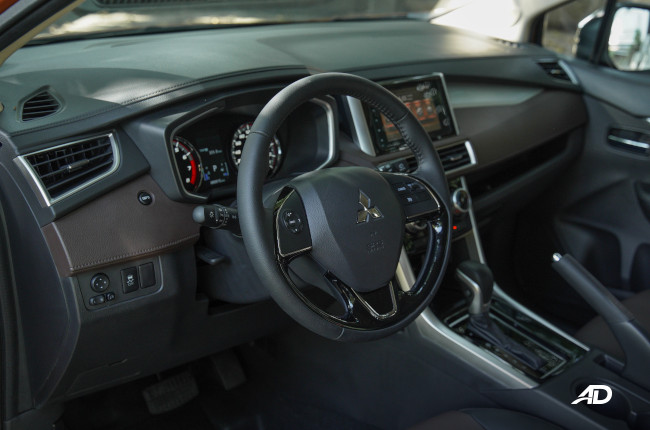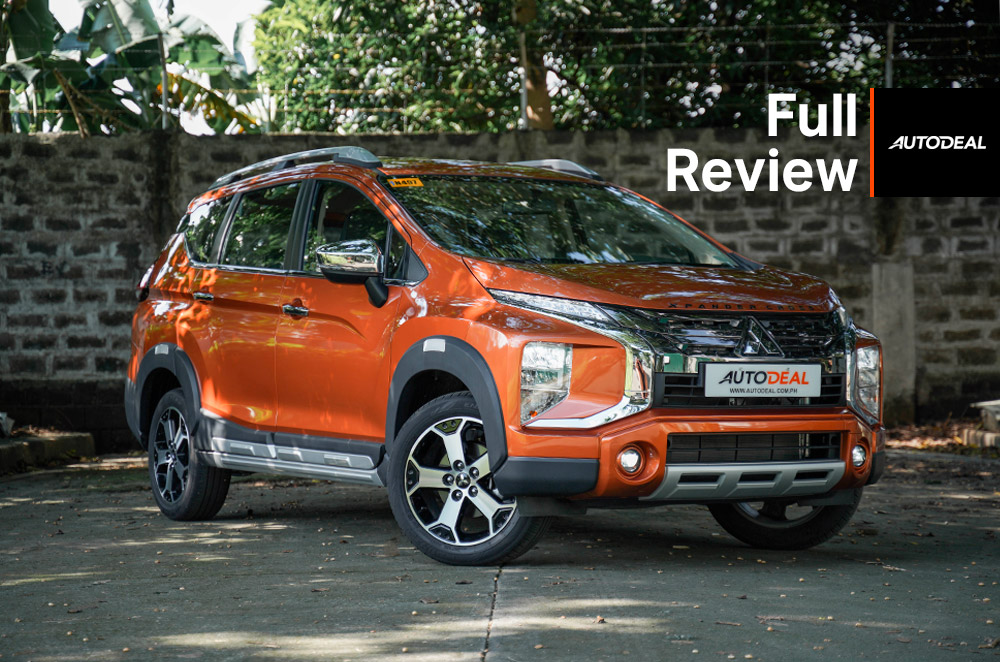
Contents
Facelifts are pretty interesting because pointing out the differences between the facelift and the non-facelift models is a bit of a trip. Essentially the same car, but styled to look better and with improvements over the previous iteration. However, this is not exactly a facelift, nor is it a new model. The 2020 Mitsubishi Xpander Cross is an iteration on the popular Xpander.
Engine Output (HP), Acceleration, Transmission, Handling 4.0/5
Exterior & Interior Design, Quality, Fit and Finish, Ergonomics 3.5/5
Cabin Comfort, Suspension, NVH Insulation 4.5/5
Convenience Technologies, Active and Passive Safety Features 3.5/5
Amount of the vehicle you get for the price, Fuel Efficiency 3.5/5
- Peppy performance for a 1.5-liter engine
- Good fuel economy
- A lot of space
- Lots of cubby holes
- Pricey
- Subjective styling
Exterior
We’ve grown accustomed to the look of the Xpander, and now that Mitsubishi has iterated on one of its best-selling models, we have to say that it could be just right for some, and a bit much for others. The black cladding along with the other inclusions are enough to catch attention, that much is certain. It’s not bad, though if you were to ask us, it feels like the Xpander was already a clean-cut look, while the Cross is a little too much rugged for something with very sharp cuts and corners.
Upsized from the regular, the wheels of the Cross feature a two-tone look and with a wheel diameter that measures in at 17-inches in size. The wheels are bigger, and the wheel wells are more apparent which allows for a ground clearance figure of 225 mm, which should be good enough for most challenges in the city, and perhaps your occasional gravel road, but nothing too extreme. Apart from that the side is also home to a lot of accessories and black plastic along with the familiar, yet garnished rear. The front remains and rear remains an Xpander but it has been improved upon, though still could be a little much for some tastes.
Overall, the Xpander Cross is an improved-upon Xpander. Though the term “improvement” can be a bit subjective. Underneath its cladding and accessories, it has a good base, however, the added extras could be a bit too extra for some, but attractive for others so it will depend on your preferences. More ground clearance is welcome, and we like that best about the car along with the larger wheels, but in the team’s opinion, we feel that Mitsubishi could have dialed back the styling elements a bit.
Interior
Perhaps the most substantial update will be with regard to the interior of the Xpander Cross. The top of the line Xpander only had cloth seats to go with it, however, Mitsubishi has since rectified that oversight and now the Xpander Cross comes with a two-tone interior which is a marked improvement.
However, it is still running with the same panels as found in the base Xpanders, so the improvement has more to do with the fact that there is at least a splash of color. Otherwise, people who like what the normal model has to offer wil find that the Cross’ interior is a nicer place to be in, even if it is very similar. You also get climate control vents for the middle row of passengers, but the rear makes do with sharing this set of blowers.
Passengers in the second row can enjoy quite a bit of space, and passengers in the third row can enjoy more space thanks to the sliding middle row. Just like the regular version, you get loads of cubby holes and space is adequate for individuals of average Filipino height and weight. Side to side, room in the middle row is pretty good, and third row is as you’d expect. Fold those seats down and you get up to 1600 liters worth of space, but with all the seats up, you only get about 150-liters of space. Third-row down, however, the space is more than enough and can even measure up to SUVs. Overall, the Xpander was still a car where space was aplenty, and the Xpander Cross is still one of our top picks in that regard.
Comfort

With its unibody chassis, extra ground clearance, and its rather light weight, the Xpander Cross is still one of the better-riding 7-seaters in its class. It’s not the most plush because it is limited by its torsion beam at the rear coupled with MacPherson struts in the front, and the taller springs are a bit on the bouncy side, but if you’re not too picky, going over bumps and potholes is not a jarring experience. As for passengers, the ride gets noticeably worse towards the rear. The best seats in the house are definitely up front or in the middle row.
NVH is also just acceptable. There is a good amount of insulation in the cabin, however, the road noise can get a little intrusive especially at highway speeds. Wind noise is also intrusive at higher speeds, but the sound deadening is good for city driving and is not going to cause issue for many.
Technology
One of the lukewarm areas with the Xpander Cross is with its tech features. It’s mostly the same experience from before with Bluetooth, AUX, and USB inputs, however, we were looking for the Apple CarPlay and Android Auto integration.
Though it’s not all bad because the car still comes with a backup camera, tons of 12-volt sockets to plug into, The gauges are still the same, with a color screen down the middle flanked by two gauges. Those who have been inside a Mitsubishi will be very familiar with this system. You also get cruise control and steering audio controls at least, and also a push-start system.
Safety

Equipped with driver and front passenger airbags, ABS with electronic brakeforce distribution, active stability control, traction control, hill-start assist, emergency stop signal, and ISOFIX tethers, the Xpander covers with most of the basics and not too much fluff. It has everything that you need, though we would have wished it came with more for the price that it commands such as more airbags.
Driving and Handling

Much like its relative, it drives light and it feels easy to use in the city. The dimensions are not that intimidating and it has more than enough height to give you a good view of the road. Visibility is also a plus in this regard, as well as the generous amounts of space for the driver to sit in. Turning in the Xpander Cross is evidently met with a bit of body roll, and its composed enough for slow turns, but faster and you might rock the boat.

However, surprisingly, the 4-speed automatic and the 1.5-liter engine with 103 hp and 141 Nm of torque does well enough in the city, returning good amounts of response and low-end torque. The problem is when you want to get going. Putting your foot down to merge with highway speeds is a little on the slow side, though thanks to the gearing your journey to cruising speed won’t be as long.
Fuel Economy

After getting out on the highway, we managed a fuel economy figure of 16.5 kilometers per litter, which is not that bad for a car of this size. Though it is just fair given other competitors. Though, the city figure we managed in traffic is 9km/L while clear roads netted us 13 km/L. Pretty decent for a small gasoline engine.
Verdict

It goes without saying that too much of a good thing, may not be good for you, but you can’t exactly quantify how much is too much because that is subjective. Mitsubishi has kitted out their Xpander and made it into something that’s more special. It is, for all intents and purposes, more special, but for certain buyers of certain wants. If a more rugged-looking MPV is more your speed, and you want something that is the ultimate version of one of the hottest selling models in the country, go right ahead.
However, the price is quite steep for what you get. An Xpander will set you back over a million Pesos, but the Xpander Cross will cost you P1,255,000, which is P80,000 more than the normal model. However, think of it as an extra appearance package over the regular, and if it stirs your emotions, and you’re liking that interior and the brand that comes with it, then it can be worthwhile.
Exterior Photo Gallery
Interior Photo Gallery
Specifications
Engine
1.5 LFuel Type
GasolinePerformance
103 hp @ 6,000 rpmTransmission
Automatic-
Summary
-
Name Mitsubishi Xpander Cross 1.5 AT Body Type Crossover Price ₱1,255,000 Transmission Category Automatic -
Engine
-
Engine Size 1.5 L Displacement 1,499 cc Number of Cylinders 4 Number of Valves 16 Transmission Type 4-Speed Automatic -
Performance
-
Drivetrain Front-Wheel Drive Max Output (hp) 103 hp @ 6,000 rpm Max Torque (nm) 141 Nm @ 4,000 rpm -
Economy & Environment
-
Fuel Type Gasoline Emissions Standard n/a Fuel Capacity 45.0 L *Combined Fuel Consumption 7.4 km/L *brand manufacturer claim
-
Dimensions
-
Length 4,500 mm Width 1,800 mm Height 1,750 mm Wheelbase 2,775 mm Turning Circle 10 m Ground Clearance 225 mm Trunk Capacity n/a Number of Doors 5 Number of Seats 7 -
Safety & Security
-
Driver's Airbag 1 Front Passenger's Airbag 1 Side Airbag Curtain Airbag Knee Airbag Auto Brake System Electronic Brake Distribution Anti-lock Brake System (ABS) Electronic Brake-force Distribution (EBD)
Immobilizer Security Alarm Stability Control Electronic Door Locks Speed Sensing Door Locks ISOFIX Lane Departure Warning System Blind-Spot Detection System -
Features
-
Cruise Control Front Parking Sensors Rear Parking Sensors Leather Upholstery Push Start Button Wheel Size 17 in Wheels Metal Type Alloy Airconditioning System Manual Cooler, Dial Type Control with rear vents Entertainment System 7-inch touchscreen headunit with 6 speakers, 2 tweeters, and GPS Navigation Connectivity Bluetooth Connectivity, Aux-in Cable, USB port, iPod compatibility Navigation Ready Warranty 3 Years (100,000 km) Keyless Entry Roof Rack Sunroof Electric Adjustable Seats Power Steering Power Windows Power Outlet Steering Wheel Audio Control -
Technology
-
Active Park Assist Hill Start Assist AWD Modes n/a Tire Pressure Monitoring Heads-up Display Power Liftgate Start-stop System
Colors
Latest Review
-
Addictively excessive: The Ford Ranger Raptor Twin Turbo V6 / Review
The Ford Ranger Raptor Twin Turbo V6 is one crazy pickup truck. Wondering why? Just keep reading.
4.6 / 5 -
The Kia Carnival gives you more: More seats, more comfort, and more practicality / Review
The Kia Carnival is a three-row MPV designed for executives and families. It combines comfort, technology, and practicality, making it a strong choice for those looking for a premium people...
4.2 / 5 -
The Jetour Ice Cream: A pint-sized EV that’s hard to ignore / Review
The Jetour Ice Cream is an adorable, pint-sized electric car that’s made for the city. Affordable and stylish, it’s easy to love, but does it tick all the boxes for you?
3.7 / 5
Popular Articles
-
Cheapest cars under P700,000 in the Philippines
Jerome Tresvalles · Sep 02, 2024
-
First car or next car, the Ford EcoSport is a tough package to beat
Jun 18, 2021
-
Car Maintenance checklist and guide – here’s everything you need to know
Earl Lee · Jan 12, 2021
-
Most fuel efficient family cars in the Philippines
Bryan Aaron Rivera · Nov 27, 2020
-
2021 Geely Okavango — Everything you need to know
Joey Deriquito · Nov 19, 2020
-
Family cars in the Philippines with the biggest trunks
Sep 20, 2023
-
Head to head: Toyota Rush vs. Suzuki XL7
Joey Deriquito · Oct 28, 2020
-
Why oil changes are important for your car
Earl Lee · Nov 10, 2020
-
2021 Kia Stonic — What you need to know about it
Joey Deriquito · Oct 16, 2020
-
Top 7 tips for buying a used car in the Philippines
Joey Deriquito · Nov 26, 2020



